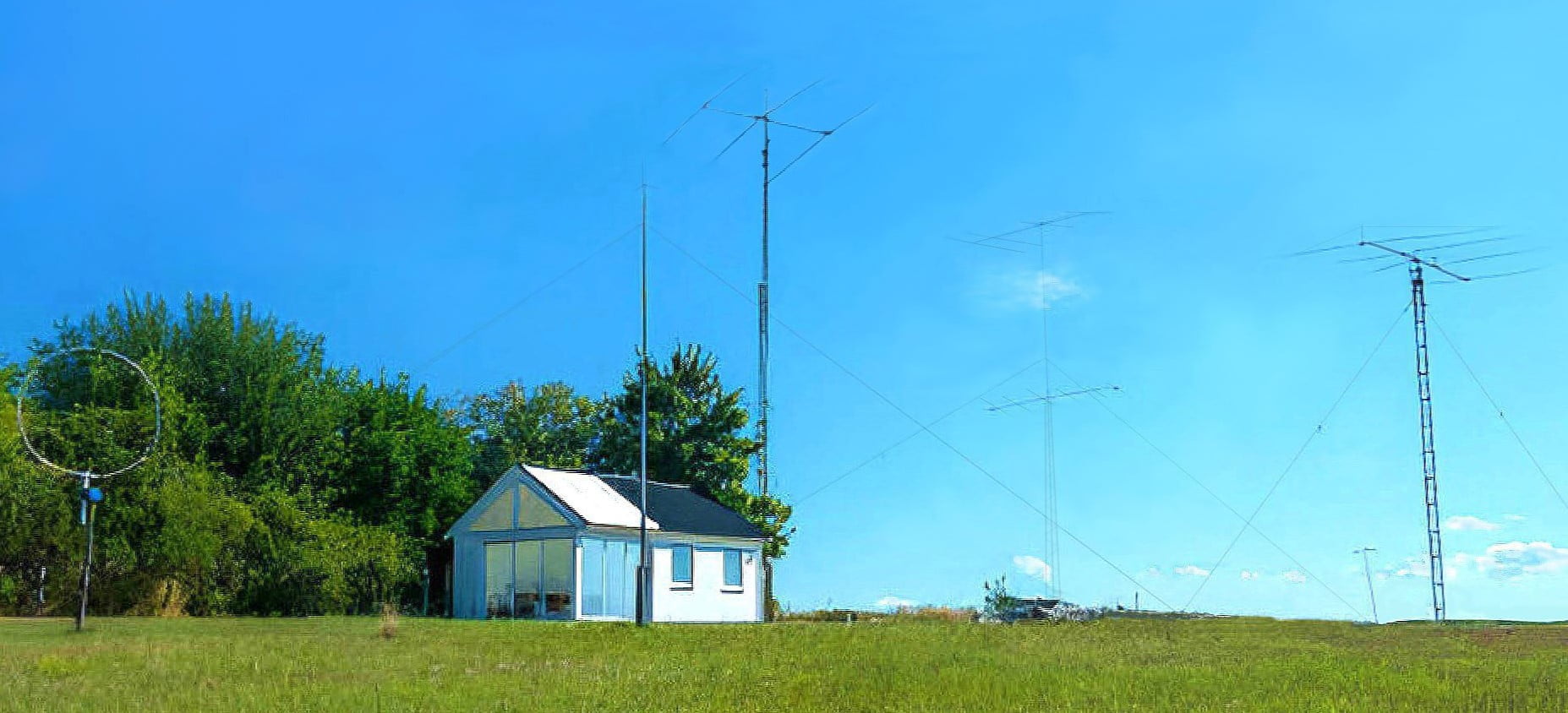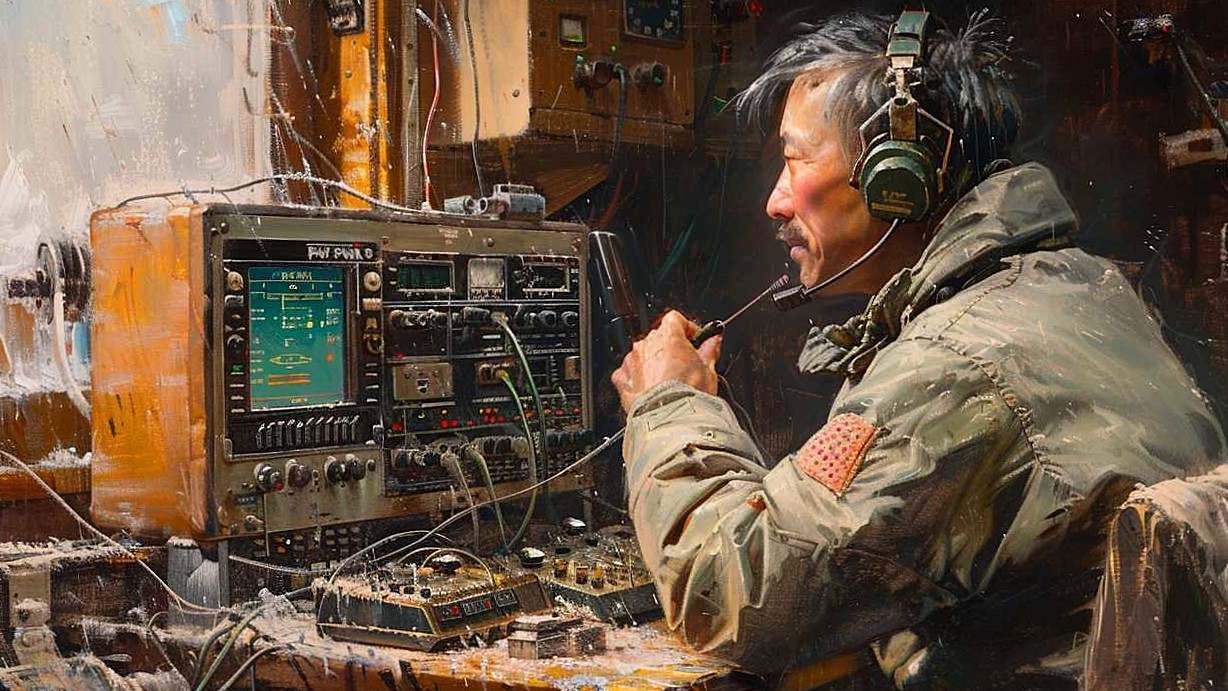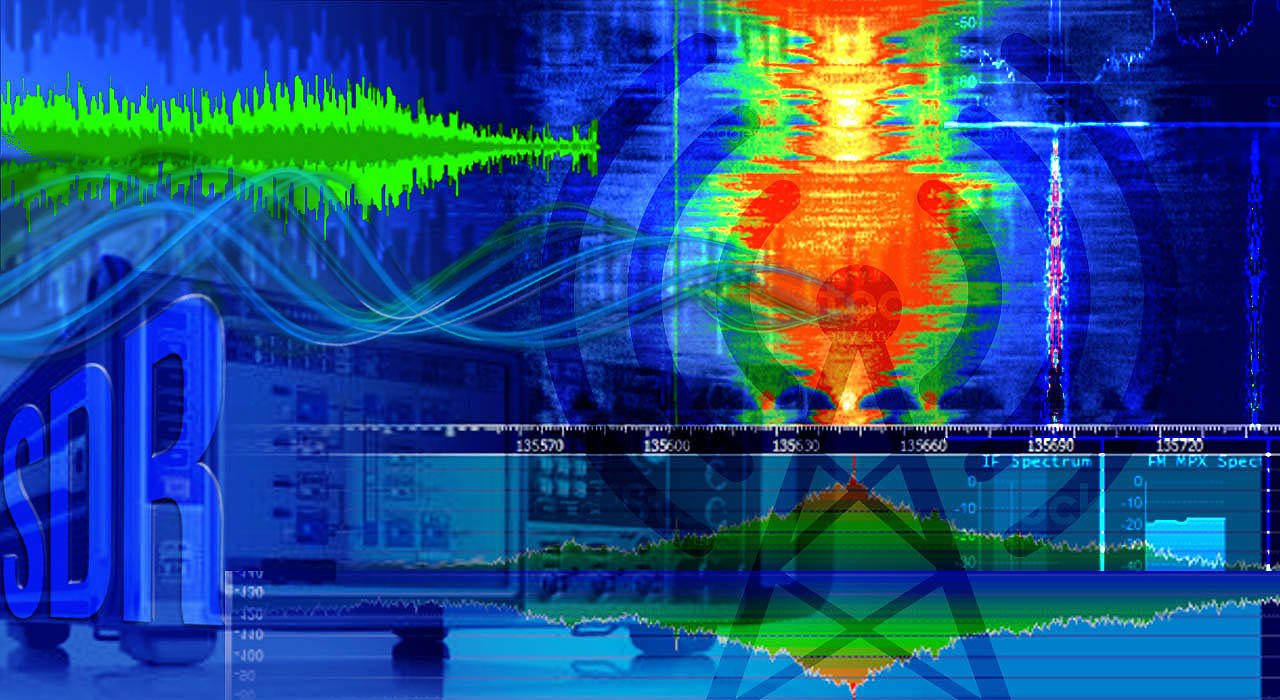HAM Radio Antennas : Why Antennas matter more than Radios
Ham radio antennas are responsible for both transmitting and receiving signals, making them the critical link between you and the rest of the world. Without a good antenna system, even the most high-end Radio will struggle to reach its full potential.
The importance of the antenna lies in its ability to efficiently convert electrical signals from the radio to electromagnetic waves that can travel long distances. Inefficient antennae leads to weak signals, and limited range, creating power losses. The dual functionality (receive and transmit) makes the antenna an indispensable component of a wireless communication setup.
Different Categories of Ham Radio Antenna
Its very importance for the novice to understand different types of antennae, before selecting the right antenna which depends on several factors, including location, operating frequency, and specific needs.
For new Radio Amateur’s/ beginners, below is a simple breakdown of the most common categories of Antennas, without discussing deeply or using serious tech terminology
Dipole Antenna
Dipole antennas are among the most popular and widely used antennas in the ham radio community. They consist of two identical conductive elements, such as wires or rods, that are aligned in a straight line (or slightly stooping down). The dipole antenna is known for its simplicity, efficiency, and versatility. It’s a great choice for beginners and can be easily set up in most environments.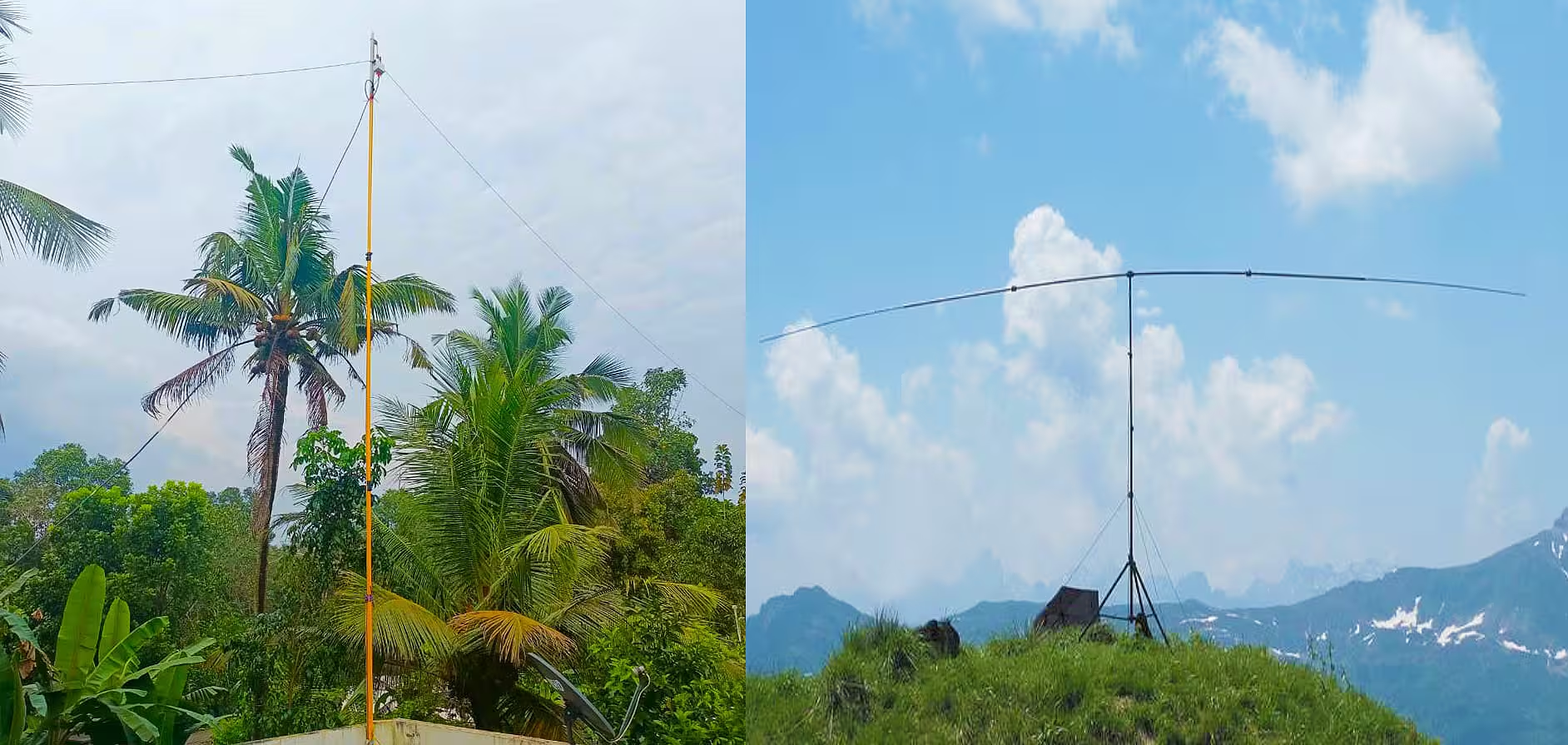
Vertical Antenna
Vertical antennas are a common choice for operators with limited space. These antennas stand upright and radiate signals in all directions, making them ideal for omnidirectional communication. Vertical antennas are often used for short distance in UHF to VHF portable handheld radios, as well long-distance communication on High frequency bands.
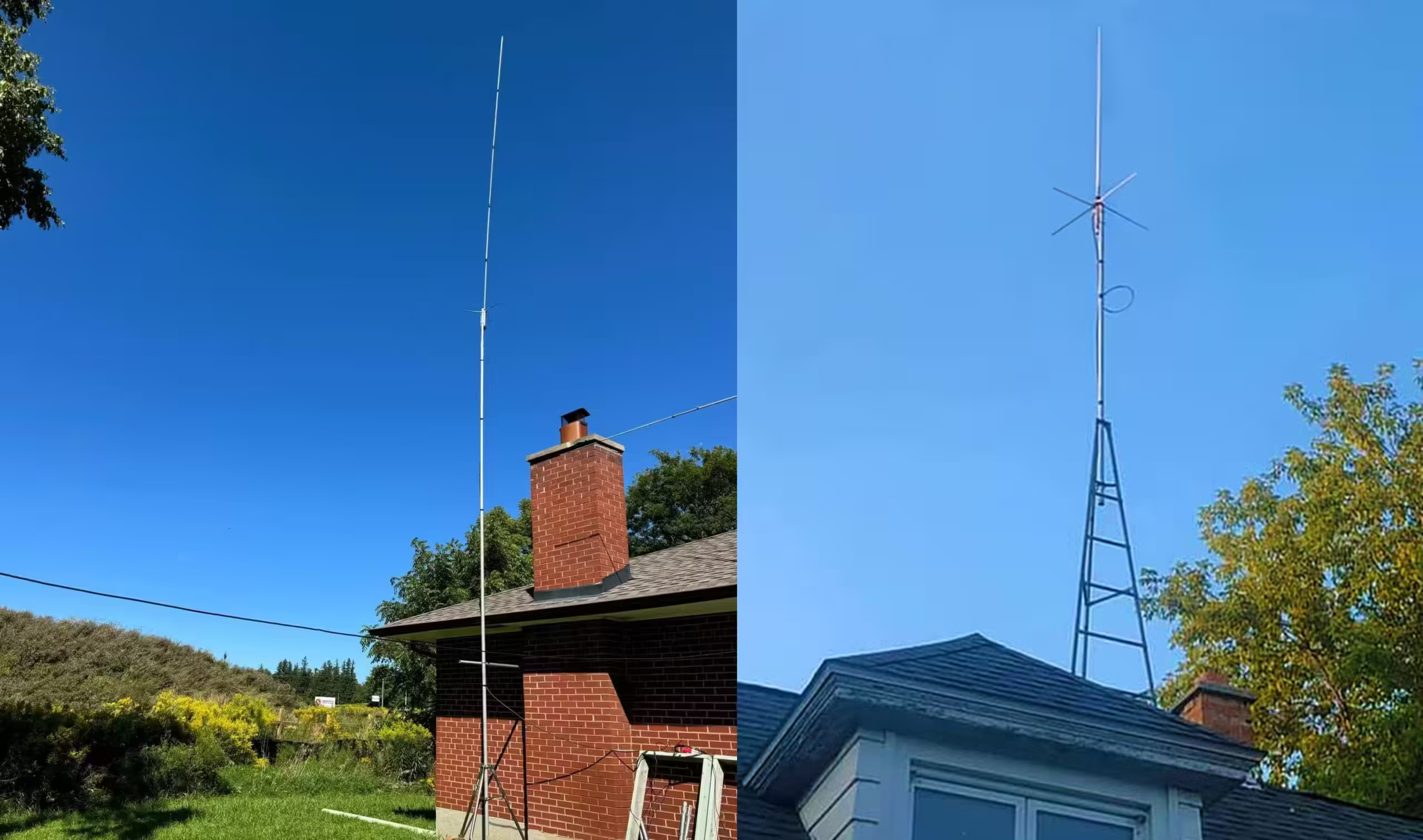
HAM Radio Yagi Antenna
Yagi antennas, also known as beam antennas, are highly directional and offer excellent gain. They consist of multiple parallel elements mounted on a horizontal boom. Yagi antennas are ideal for operators who want to focus their signal in a specific direction, which are used for working DX (distant stations). The ability to rotate and concentrate the radio signal in a particular direction makes these unique. The considerable effort involved in installing them and maintaining them, is a great worth. They also come in multiple-band operational specs.
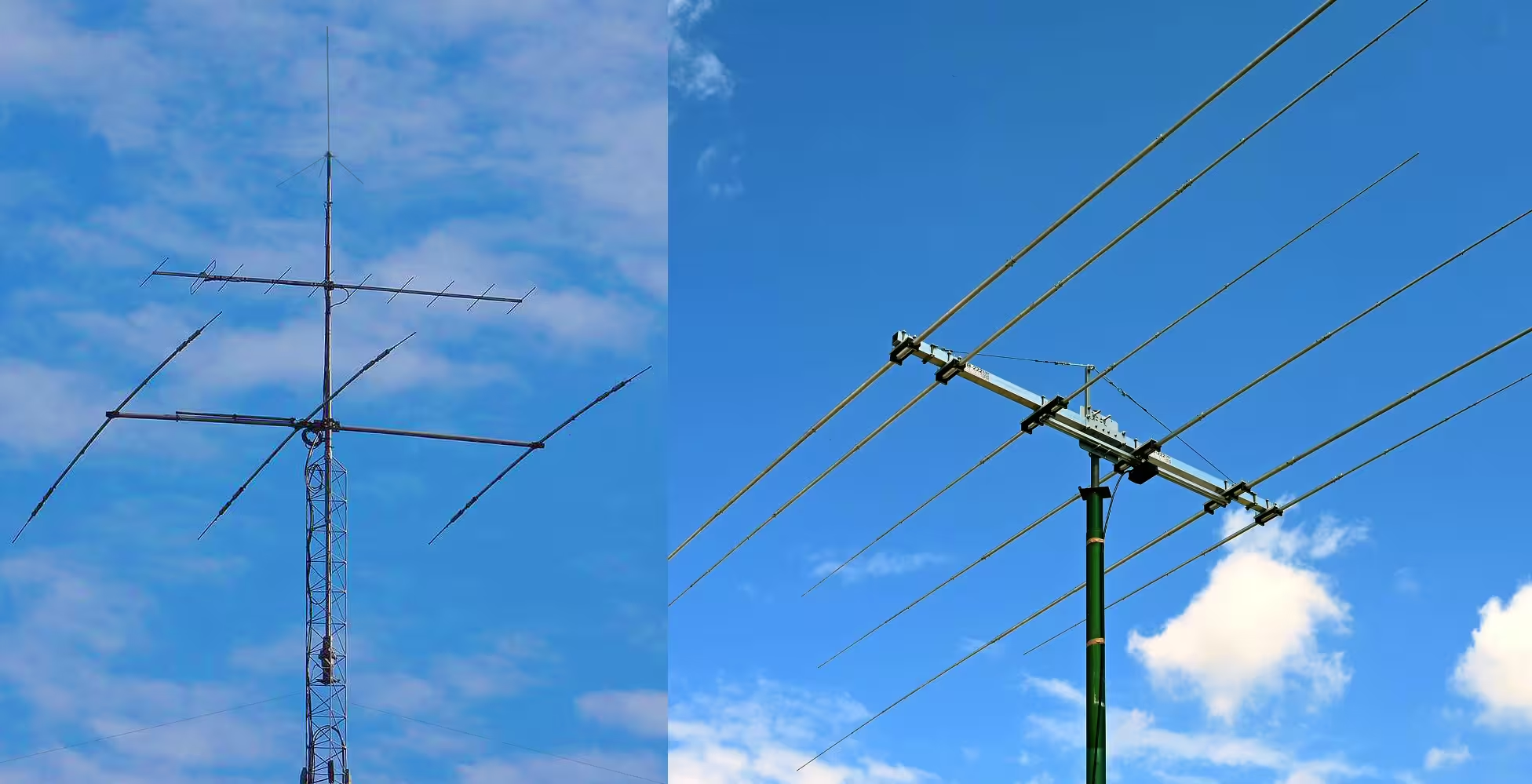
Loop Antenna
Loop antennas are a type of compact antenna that can be either circular or square in shape. They are known for their ability to reduce noise and handle high power levels. Loop antennas are often used in urban environments where space is limited, and they can be easily mounted on rooftops or in attics. There are different types like, the magnetic loop, delta loop, rectangular loop etc.
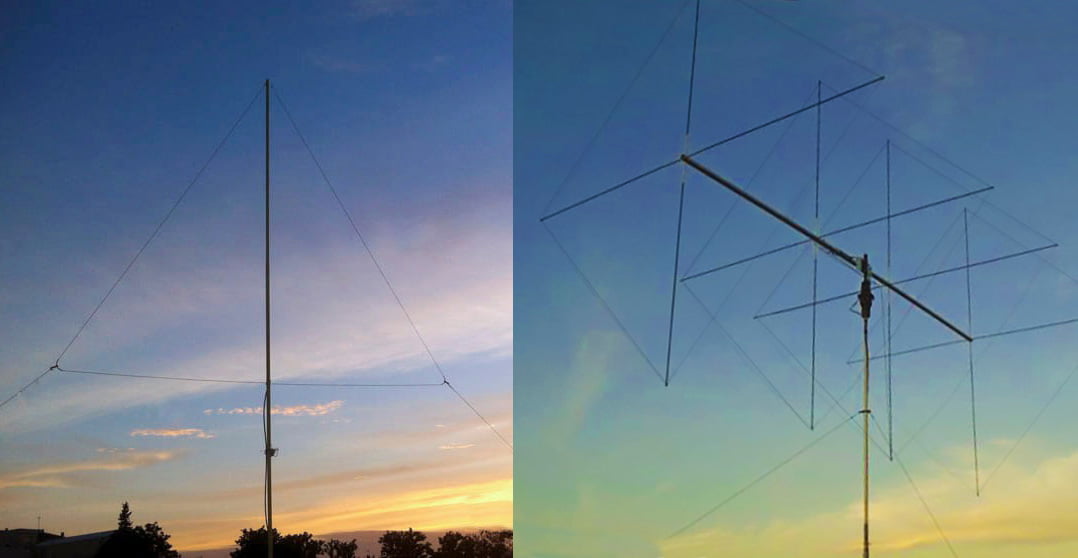
End-Fed Antenna
End-fed antennas are another popular choice for hams, especially those who need a simple and flexible setup. As the name suggests, these antennas are fed from one end (i.e. the coaxial cable connected at an extreme end), allowing easy installation in a variety of locations. The other end’s generally strung at a high point above ground. End-fed antennas are often used in portable operations, making them a favorite among operators who enjoy fieldwork.

The Simple Wire Antenna
Wire antennas are the go-to for many hams due to their simplicity and low cost. These antennas can be easily constructed from basic materials like copper wire and are often used for long-distance communication. Wire antennas can be configured in various shapes and sizes, including inverted V or L, long wire, and a random wire (pointed to specific direction), making them adaptable to different situations. These needs to be tuned using a tuner for optimal use. This type along with the End-fed can also be used as a Stealth or camouflaged antenna.
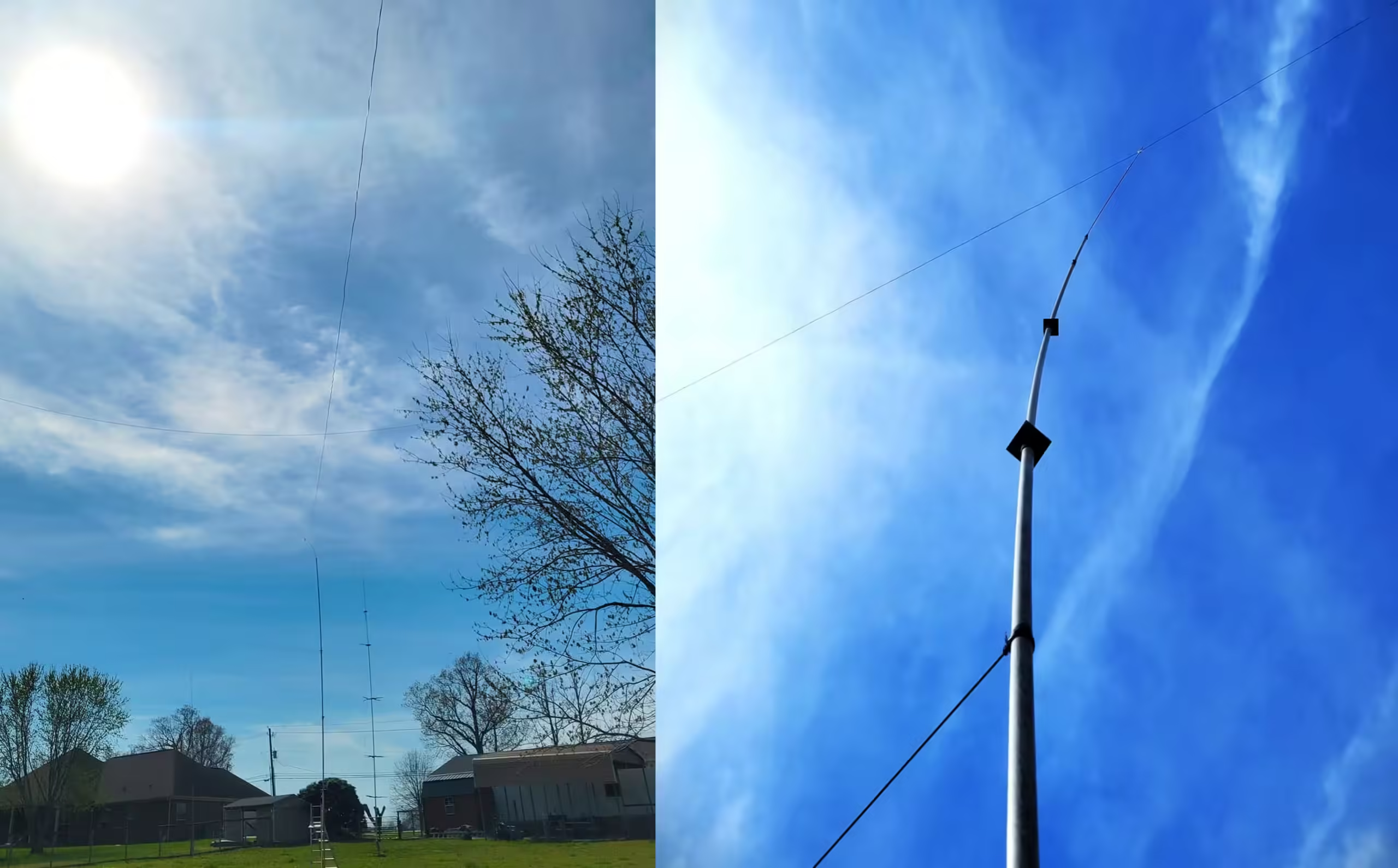
Portable Ham Radio Antenna
For operators who enjoy taking their hobby on the road, portable ham radio antennas are a must-have. These antennas are designed for easy setup and takedown, making them ideal for fieldwork, camping trips, or emergency situations. Portable antennas often come in compact, lightweight designs and can be quickly assembled, like that of a vehicle mounted screwdriver antenna, ham-stick etc.
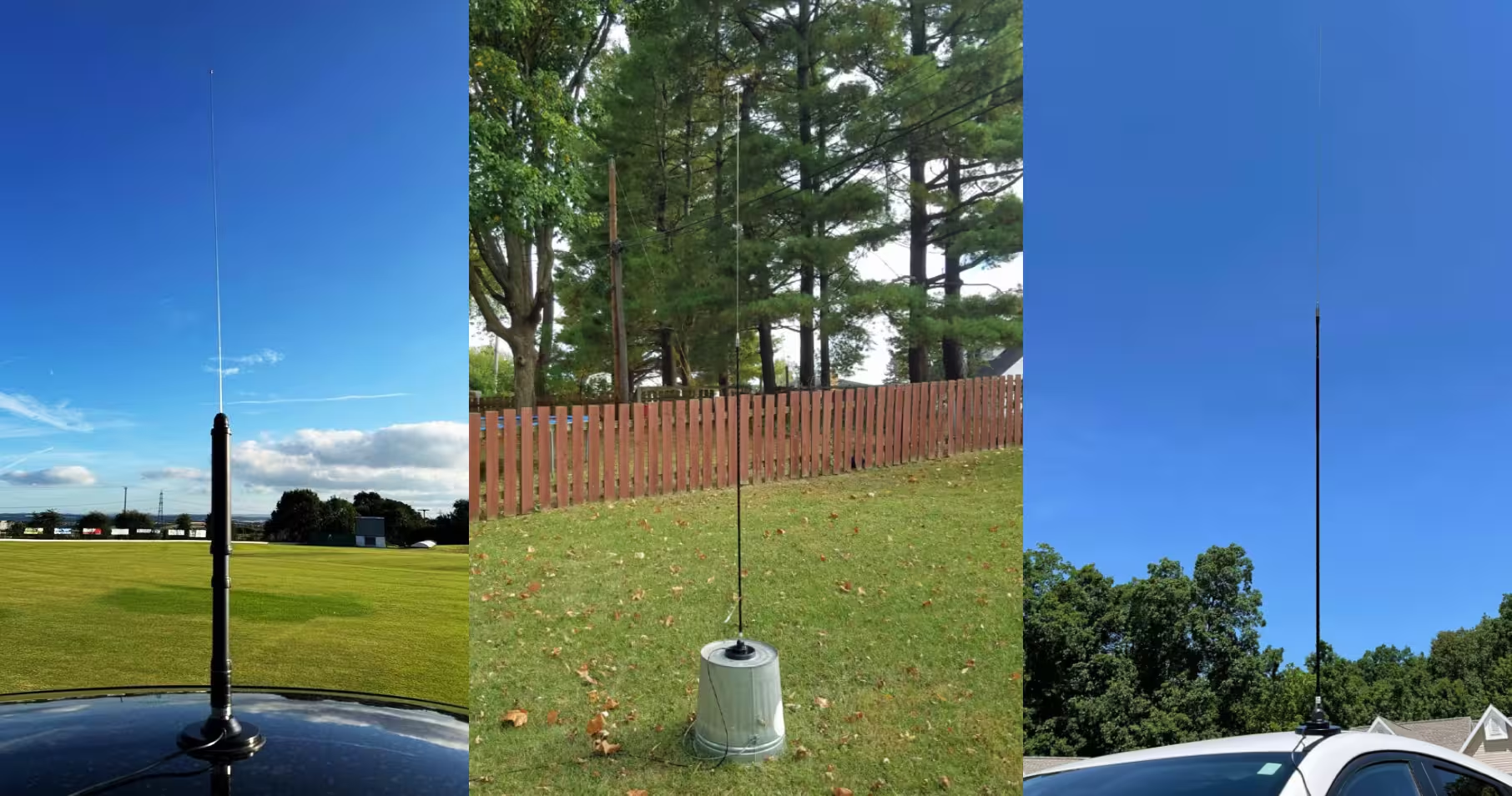
Ham Radio Antenna Tower
A sturdy structure designed to elevate antennas above ground level, significantly enhances signal reach and clarity. Positioning antenna higher, these towers help reduce obstructions like buildings or trees, more reliable communication over greater distances. For serious ham radio operators, and ardent enthusiasts, investing as well as maintaining a well-built antenna tower can dramatically improve radio communication range.
Ham Radio Stealth Antenna
A Stealth antenna is one which is designed to go unnoticed. This is achieved by either of the following: Even when strung in open, by making it difficult to see, with the use of thin wire, run on fence, up tree or on roofline, flagpole, roof vent, etc. Disguising the antenna appearance is the main purpose. Sometimes, its set indoors, like in attic, such as a wire dipole or wire loops, etc.
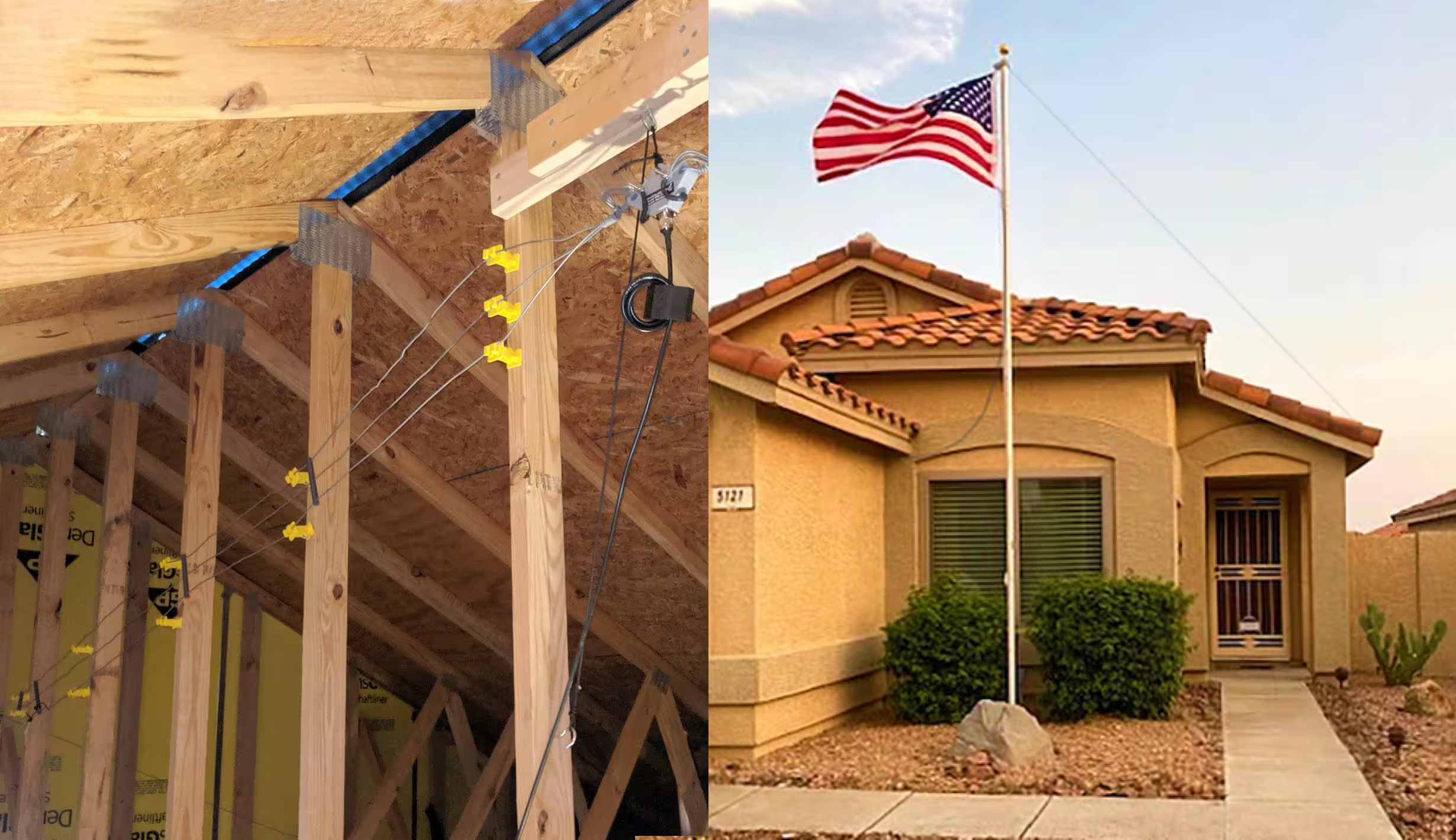
Multi Band Ham Radio Antenna
An antenna is designed to operate on a frequency or a narrow range of frequencies. As it’s tailored to a specific band, the antenna’s length must be precise to ensure it vibrates (resonates) properly during transmission and reception. This fine-tuning allows for optimal performance on that particular frequency.
Antennae can be designed to operate across multiple frequency bands, allowing operators to switch between different frequencies without needing to change antennas. In the HF bands (1.8Mhz to 29.700Mhz) for example, it includes the G5RV antenna, Cobweb, Windom antenna, fan dipole, etc. popular for their ability to handle several HF bands with a single setup. These antennas have the flexibility and convenience, making them ideal for operators who want to explore various bands without the hassle of multiple installations.
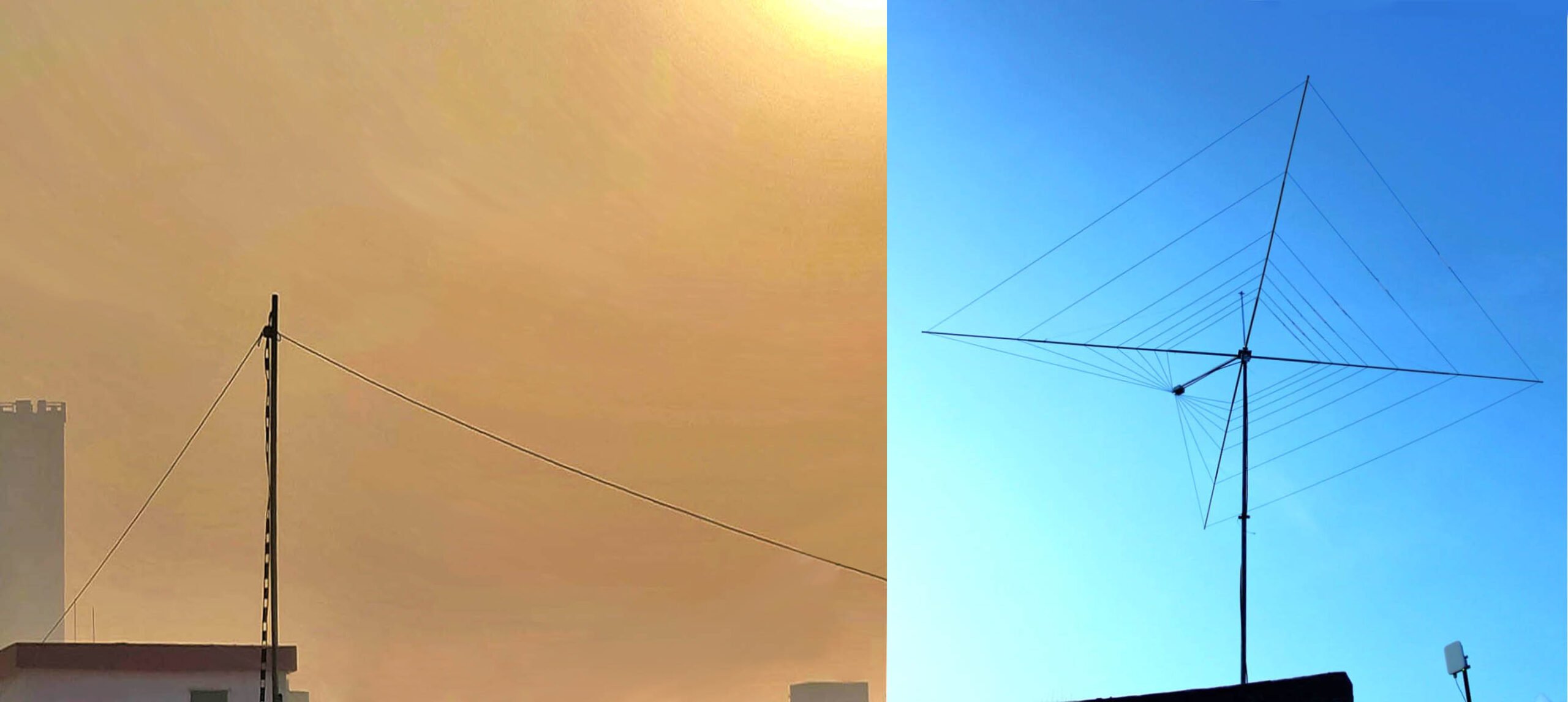
Making the Right Choice for Ham Antenna
Those with space constraints, vertical may be the best option to choose. Beginners often start with a dipole or wire antenna due to their nominal cost, ease of setup and versatility. If you have budget, space and looking to focus your signal in a particular direction, a Yagi antenna might be the way to go.
Among ham radio enthusiasts, there’s a common belief that your antenna should cost more than your radio. This idea stems from the fact that a high-quality antenna, if deployed well, can dramatically improve overall experience, often more than the radio itself. While commercially available Amateur radio transceivers come with plethora of features, still they are limited by the antenna’s quality.
For this reason, many experienced hams and radio homebrewers (hams who assemble their own radio) prioritize spending on a top-notch antenna and matching coaxial cables (called transmission lines) to truly enjoy the full performance. If you new into HAM Radio Hobby, remember: the right optimally build antenna can make all the difference to your radio journey. Invest wisely, deploy your antenna perfectly, and you’ll enjoy clearer signals, greater range, and more satisfying communications.


